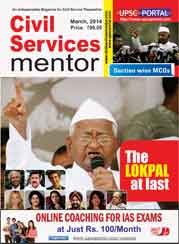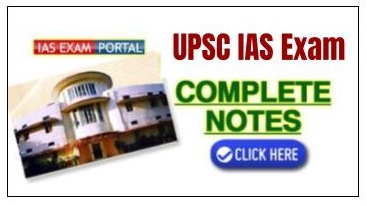
Punjab Public Service Commission (PPSC)
Mains Examination Syllabus - History
PAPER - I
1. Sources:
Archaeological sources:
Exploration, excavation, epigraphy, numismatics, monuments
Literary sources:
Indigenous: Primary and secondary; poetry, scientific
literature, literature, literature in regional languages, religious literature.
Foreign accounts: Greek, Chinese and Arab writers.
2. Pre-history and Proto-history:
Geographical factors; hunting and gathering (paleolithic and
mesolithic); Beginning of agriculture (neolithic and chalcolithic).
3. Indus Valley Civilization:
Origin, date, extent, characteristics, decline, survival and
significance, art and architecture.
4. Megalithic Cultures:
Distribution of pastoral and farming cultures outside the
Indus, Development of community life, Settlements, Development of agriculture,
Crafts, Pottery, and Iron
industry.
5. Aryans and Vedic Period:
Expansions of Aryans in India.
Vedic Period: Religious and philosophic literature;
Transformation from Rig Vedic period to the later Vedic period; Political,
social and economical life; Significance of the Vedic Age; Evolution of Monarchy
and Varna system.
6. Period of Mahajanapadas:
Formation of States (Mahajanapada) : Republics and
monarchies; Rise of urban centres; Trade routes; Economic growth; Introduction
of coinage; Spread of Jainism and Buddhism; Rise of Magadha and Nandas.
Iranian and Macedonian invasions and their impact.
7. Mauryan Empire:
Foundation of the Mauryan Empire, Chandragupta, Kautilya and
Arthashastra; Ashoka; Concept of Dharma; Edicts; Polity, Administration;
Economy; Art, architecture and sculpture; External contacts; Religion; Spread of
religion; Literature.
Disintegration of the empire; Sungas and Kanvas.
8. Post - Mauryan Period (Indo-Greeks, Sakas, Kushanas,
Western Kshatrapas):
Contact with outside world; growth of urban centres, economy,
coinage, development of religions, Mahayana, social conditions, art,
architecture, culture, literature and science.
9. Early State and Society in Eastern India, Deccan and
South India:
Kharavela, The Satavahanas, Tamil States of the Sangam Age;
Administration, economy, land grants, coinage, trade guilds and urban centres;
Buddhist centres; Sangam literature and culture; Art and architecture.
10. Guptas, Vakatakas and Vardhanas:
Polity and administration, Economic conditions, Coinage of
the Guptas, Land grants, Decline of urban centres, Indian feudalism, Caste
system, Position of women, Education and educational institutions; Nalanda,
Vikramshila and Vallabhi, Literature, scientific literature, art and
architecture.
11. Regional States during Gupta Era:
The Kadambas, Pallavas, Chalukyas of Badami; Polity and
Administration, Trade guilds, Literature; growth of Vaishnava and Saiva
religions. Tamil Bhakti movement, Shankaracharya; Vedanta; Institutions of
temple and temple architecture; Palas, Senas, Rashtrakutas, Paramaras, Polity
and administration; Cultural aspects. Arab conquest of Sind; Alberuni, The
Chalukyas of Kalyana, Cholas, Hoysalas, Pandyas; Polity and Administration;
local Government; Growth of art and architecture, religious sects, Institution
of temple and Mathas, Agraharas, education and literature, economy and society.
12. Themes in Early Indian Cultural History:
Languages and texts, major stages in the evolution of art and
architecture, major philosophical thinkers and schools, ideas in Science and
Mathematics.
13. Early Medieval India, 750—1200:
- Polity: Major political developments in Northern India and
the Peninsula, origin and the rise of Rajputs
- The Cholas: administration, village economy and society
- “Indian Feudalism”
- Agrarian economy and urban settlements
- Trade and commerce
- Society: the status of the Brahman and the new social order
- Condition of women
- Indian science and technology
14. Cultural Traditions in India, 750—1200:
- Philosophy: Skankaracharya and Vedanta, Ramanuja and
Vishishtadvaita, Madhva and Brahma-Mimansa
- Religion: Forms and features of religion, Tamil devotional
cult, growth of Bhakti, Islam and its arrival in India, Sufism
- Literature: Literature in Sanskrit, growth of Tamil
literature, literature in the newly developing languages, Kalhan’s Rajtarangini,
Alberuni’s India
- Art and Architecture: Temple architecture, sculpture,
painting
15. The Thirteenth Century:
- Establishment of the Delhi Sultanate: The Ghurian invasions
– factors behind Ghurian success
- Economic, social and cultural consequences
- Foundation of Delhi Sultanate and early Turkish Sultans
- Consolidation: The rule of Iltutmish and Balban
16. The Fourteenth Century:
- “The Khalji Revolution”
- Alauddin Khalji: Conquests and territorial expansion,
agrarian and economic measures
- Muhammad Tughluq: Major projects, agrarian measures,
bureaucracy of Muhammad Tughluq
- Firuz Tughluq: Agrarian measures, achievements in civil
engineering and public works, decline of the Sultanate, foreign contacts and Ibn
Battuta’s account
17. Society, Culture and Economy in the Thirteenth and
Fourteenth Centuries:
- Society: composition of rural society, ruling classes, town
dwellers, women, religious classes, caste and slavery under the Sultanate,
Bhakti movement, Sufi movement
- Culture: Persian literature, literature in the regional
languages of North India, literature in the languages of South India, Sultanate
architecture and new structural forms, painting, evolution of a composite
culture
- Economy: Agricultural production, rise of urban economy and
non-agricultural production, trade and commerce
18. The Fifteenth and Early Sixteenth Century – Political
Developments and Economy:
- Rise of Provincial Dynasties: Bengal, Kashmir (Zainul
Abedin), Gujarat, Malwa, Bahmanids
- The Vijayanagra Empire
- Lodis
- Mughal Empire, First phase: Babur and Humayun
- The Sur Empire: Sher Shah’s administration
- Portuguese Colonial enterprise
- Bhakti and Sufi Movements
19. The Fifteenth and early Sixteenth Century – Society
and Culture:
- Regional cultural specilicities
- Literary traditions
- Provincial architecture
- Society, culture, literature and the arts in Vijayanagara
Empire.
20. Akbar:
- Conquests and consolidation of the Empire
- Establishment of Jagir and Mansab systems
- Rajput policy
- Evolution of religious and social outlook, theory of
Sulh-i-kul and religious policy
- Court patronage of art and technology
21. Mughal Empire in the Seventeenth Century:
- Major administrative policies of Jahangir, Shahjahan and
Aurangzeb
- The Empire and the Zamindars
- Religious policies of Jahangir, Shahjahan and Aurangzeb
- Nature of the Mughal State
- Late Seventeenth century crisis and the revolts
- The Ahom Kingdom
- Shivaji and the early Maratha Kingdom
22. Economy and Society in the Sixteenth and Seventeenth
Centuries:
- Population, agricultural production, craft production
- Towns, commerce with Europe through Dutch, English and
French companies : a trade revolution
- Indian mercantile classes, banking, insurance and credit
systems
- Condition of peasants, condition of women
- Evolution of the Sikh community and the Khalsa Panth
23. Culture in the Mughal Empire:
- Persian histories and other literature
- Hindi and other religious literature
- Mughal architecture
- Mughal painting
- Provincial architecture and painting
- Classical music
- Science and technology
24. The Eighteenth Century:
- Factors for the decline of the Mughal Empire
- The regional principalities: Nizam’s Deccan, Bengal, Awadh
- Maratha ascendancy under the Peshwas
- The Maratha fiscal and financial system
- Emergence of Afghan Power, Battle of Panipat:1761
- State of politics, culture and economy on the eve of the
British conquest
PAPER - II
1. European Penetration into India:
The Early European Settlements; The Portuguese and the Dutch;
The English and the French East India Companies; Their struggle for supremacy;
Carnatic Wars; Bengal— The conflict between the English and the Nawabs of
Bengal; Siraj and the English; The Battle of Plassey; Significance of Plassey.
2. British Expansion in India:
Bengal—Mir Jafar and Mir Kasim; The Battle of Buxar; Mysore;
The Marathas; The three Anglo-Maratha Wars; The Punjab.
3. Early Structure of the British Raj:
The early administrative structure; From diarchy to direct
control; The Regulating Act (1773); The Pitt’s India Act (1784); The Charter Act
(1833); The voice of free trade and the changing character of British colonial
rule; The English utilitarian and India.
4. Economic Impact of British Colonial Rule:
(a) Land revenue settlements in British India; The Permanent
Settlement; Ryotwari Settlement; Mahalwari Settlement; Economic impact of the
revenue arrangements; Commercialization of agriculture; Rise of landless
agrarian labourers; Impoverishment of the rural society.
(b) Dislocation of traditional trade and commerce; De-industrialisation;
Decline of traditional crafts; Drain of wealth; Economic transformation of
India; Railroad and communication network including telegraph and postal
services; Famine and poverty in the rural interior; European business enterprise
and its limitations.
5. Social and Cultural Developments:
The state of indigenous education, its dislocation;
Orientalist-Anglicist controversy, The introduction of western education in
India; The rise of press, literature and public opinion; The rise of modern
vernacular literature; Progress of science; Christian missionary activities in
India.
6. Social and Religious Reform movements in Bengal and
Other Areas:
Ram Mohan Roy, The Brahmo Movement; Devendranath Tagore;
Iswarchandra Vidyasagar; The Young Bengal Movement; Dayanada Saraswati; The
social reform movements in India including Sati, widow remarriage, child
marriage etc.; The contribution of Indian renaissance to the growth of modern
India; Islamic revivalism—the Feraizi and Wahabi Movements.
7. Indian Response to British Rule:
Peasant movements and tribal uprisings in the 18th and 19th
centuries including the Rangpur Dhing (1783), the Kol Rebellion (1832), the
Mopla Rebellion in Malabar (1841—1920), the Santal Hul (1855), Indigo Rebellion
(1859-60), Deccan Uprising (1875) and the Munda Ulgulan (1899-1900); The Great
Revolt of 1857 - Origin, character, causes of failure, the consequences; The
shift in the character of peasant uprisings in the post—1857 period; the peasant
movements of the 1920s and 1930s.
8. Factors leading to the birth of Indian Nationalism;
Politics of Association;
The Foundation of the Indian National Congress; The
Safety-valve thesis relating to the birth of the Congress; Programme and
objectives of Early Congress; the social composition of early Congress
leadership; the Moderates and Extremists; The Partition of Bengal (1905); The
Swadeshi Movement in Bengal; the economic and political aspects of Swadeshi
Movement; The beginning of revolutionary extremism in India.
9. Rise of Gandhi; Character of Gandhian nationalism;
Gandhi’s popular appeal; Rowlatt Satyagraha; the Khilafat
Movement; the Non-cooperation Movement; National politics
from the end of the Non-cooperation movement to the beginning of the Civil
Disobedience movement; the two phases of the Civil Disobedience Movement; Simon
Commission; The Nehru Report; the Round Table Conferences; Nationalism and the
Peasant Movements; Nationalism and Working Class Movements; Women and Indian
youth and students in Indian politics (1885-1947); the election of 1937 and the
formation of ministries; Cripps Mission; the Quit India Movement; the Wavell
Plan; The Cabinet Mission.
10. Constitutional Developments in the Colonial India
between 1858 and 1935.
11. Other strands in the National Movement :
The Revolutionaries: Bengal, the Punjab, Maharashtra, U.P,
the Madras Presidency, Outside India.
The Left; The Left within the Congress: Jawaharlal Nehru,
Subhas Chandra Bose, the Congress Socialist Party; the Communist Party of India,
other left parties.
12. Politics of Separatism; the Muslim League; the
Hindu Mahasabha; Communalism and the politics of partition; Transfer of power;
Independence.
13. Consolidation as a Nation; Nehru’s Foreign Policy;
India and her neighbours (1947- 1964); The linguistic reorganisation of States
(1935-1947); Regionalism and regional inequality; Integration of Princely
States; Princes in electoral politics; the Question of National Language.
14. Caste and Ethnicity after 1947; Backward castes
and tribes in post-colonial electoral politics; Dalit movements.
15. Economic development and political change; Land
reforms; the politics of planning and rural reconstruction; Ecology and
environmental policy in post - colonial India; Progress of science.
16. Enlightenment and Modern ideas:
(i) Major ideas of Enlightenment: Kant, Rousseau.
(ii) Spread of Enlightenment in the colonies.
(iii) Rise of socialist ideas (up to Marx); spread of Marxian
Socialism.
17. Origins of Modern Politics:
(i) European States System.
(ii) American Revolution and the Constitution.
(iii) French revolution and aftermath, 1789-1815.
(iv) American Civil War with reference to Abraham Lincoln and
the abolition of slavery.
(v) British Democratic Politics, 1815-1850; Parliamentary
Reformers, Free Traders, Chartists.
18. Industrialization:
(i) English Industrial Revolution: Causes and Impact on
Society.
(ii) Industrialization in other countries: USA, Germany,
Russia, Japan.
(iii) Industrialization and Globalization.
19. Nation-State System:
(i) Rise of Nationalism in 19th century.
(ii) Nationalism: State-building in Germany and Italy.
(iii) Disintegration of Empires in the face of the emergence
of nationalities across the world.
20. Imperialism and Colonialism:
(i) South and South-East Asia.
(ii) Latin America and South Africa.
(iii) Australia.
(iv) Imperialism and free trade: Rise of neo-imperialism.
21. Revolution and Counter-Revolution:
(i) 19th Century European revolutions.
(ii) The Russian Revolution of 1917-1921.
(iii) Fascist Counter-Revolution, Italy and Germany.
(iv) The Chinese Revolution of 1949.
22. World Wars:
(i) 1st and 2nd World Wars as Total Wars: Societal
implications.
(ii) World War I: Causes and consequences.
(iii) World War II: Causes and consequence.
23. The World after World War II:
(i) Emergence of two power blocs.
(ii) Emergence of Third World and non-alignment.
(iii) UNO and the global disputes.
24. Liberation from Colonial Rule:
(i) Latin America-Bolivar.
(ii) Arab World-Egypt.
(iii) Africa-Apartheid to Democracy.
(iv) South-East Asia-Vietnam.
25. Decolonization and Underdevelopment:
(i) Factors constraining development: Latin America, Africa.
26. Unification of Europe:
(i) Post War Foundations: NATO and European Community.
(ii) Consolidation and Expansion of European Community.
(iii) European Union.





